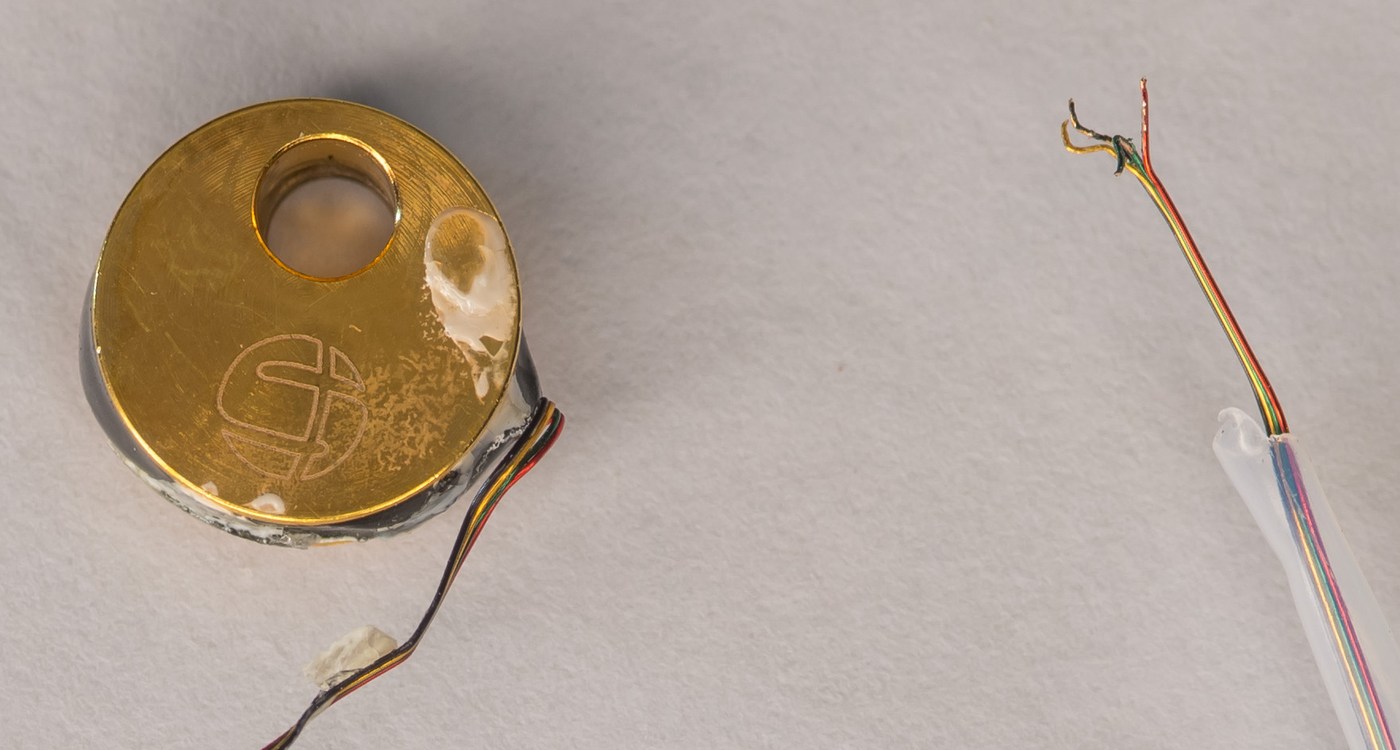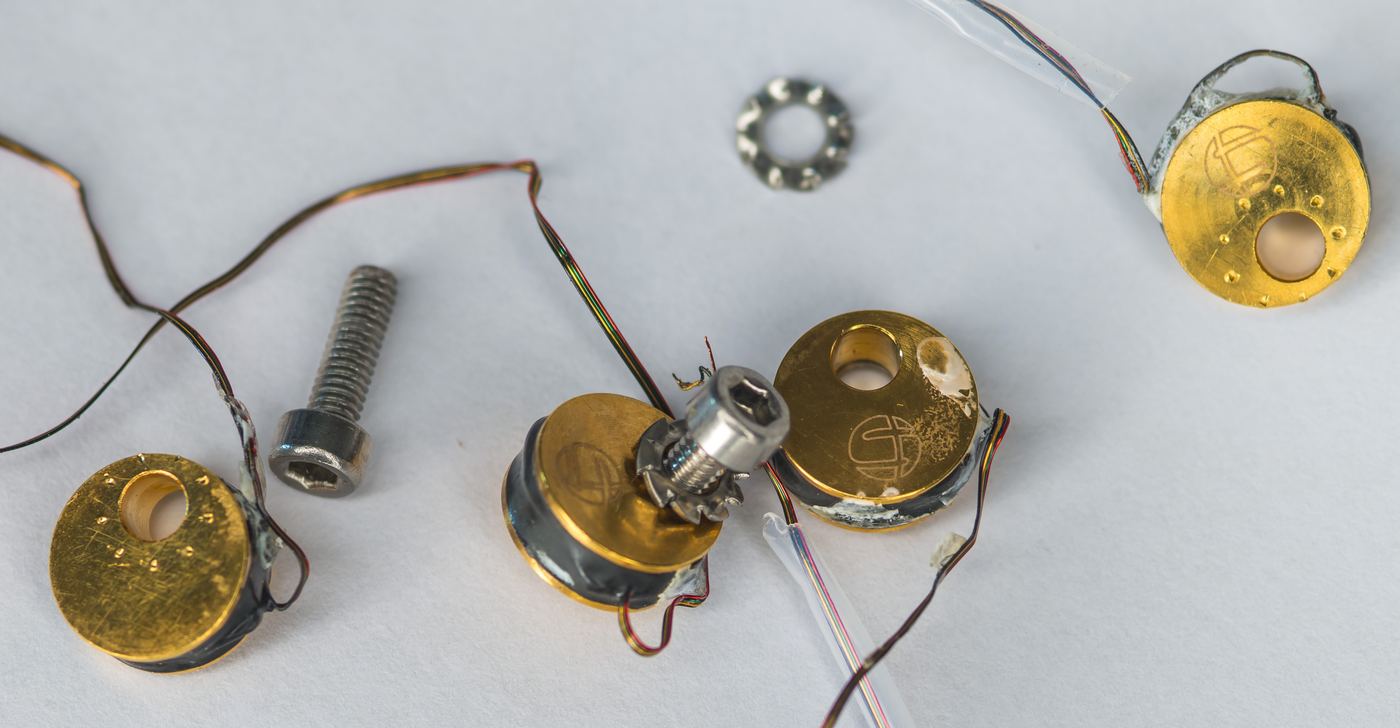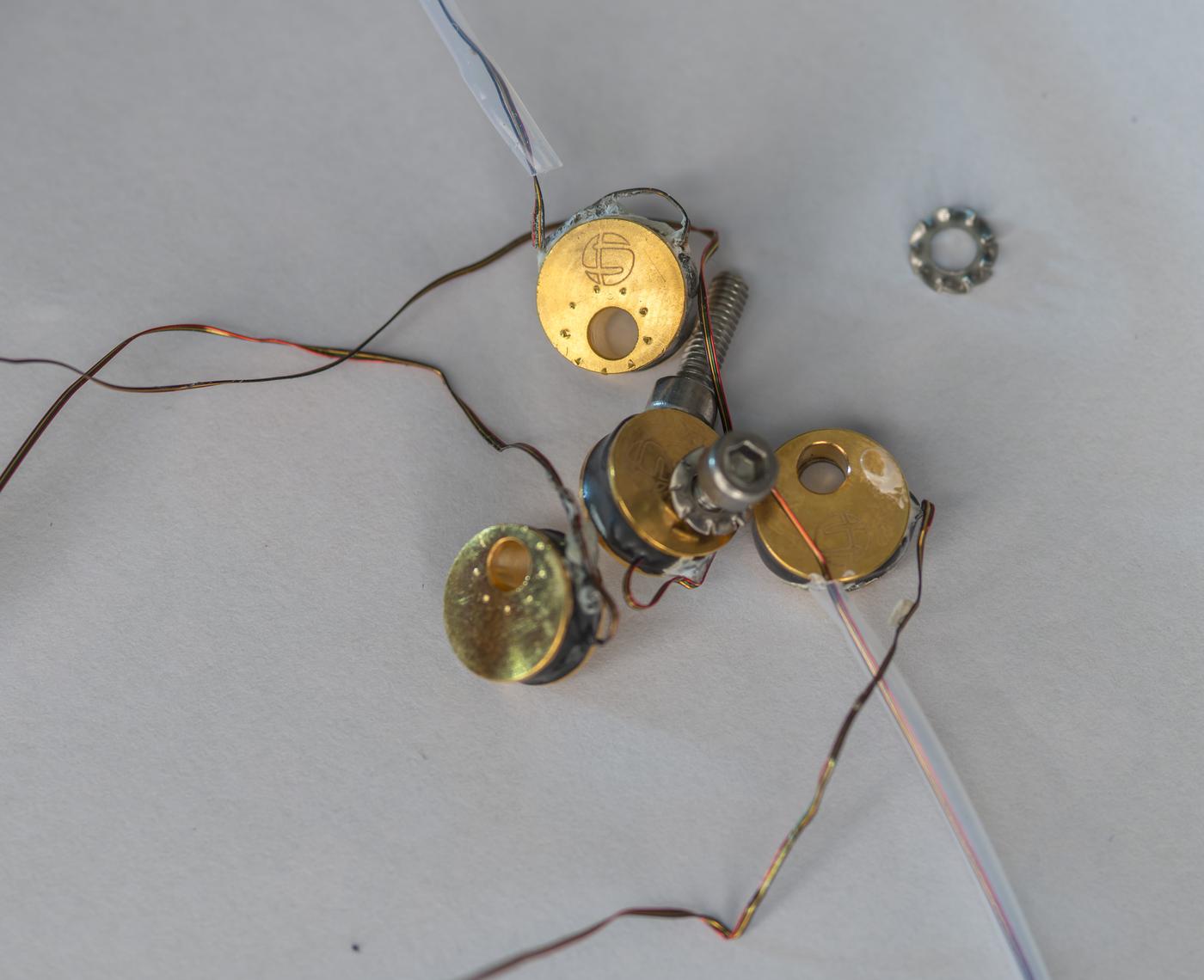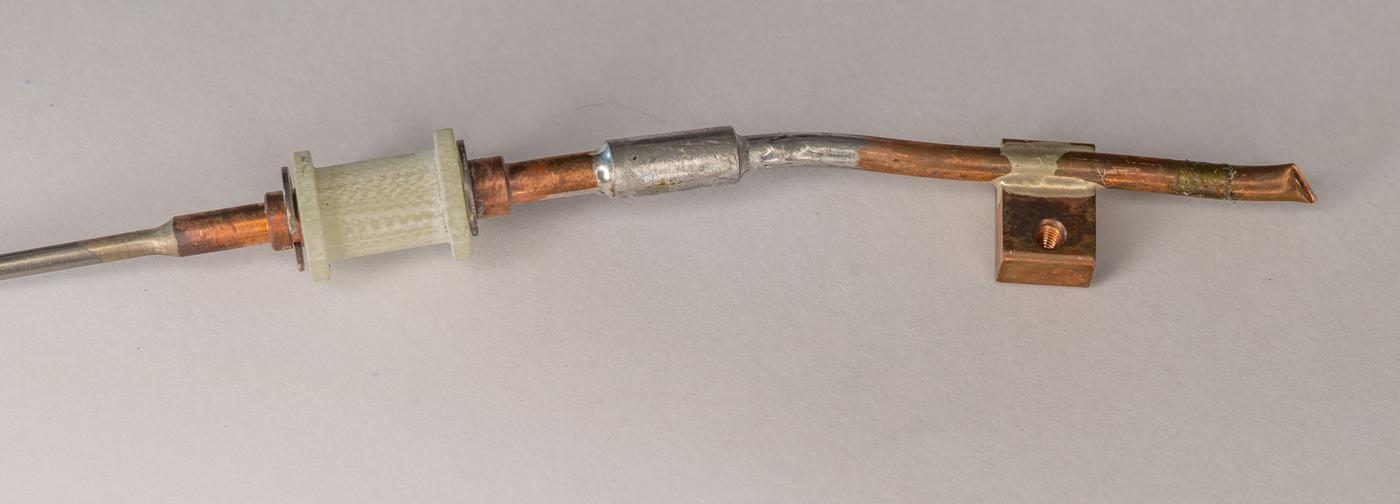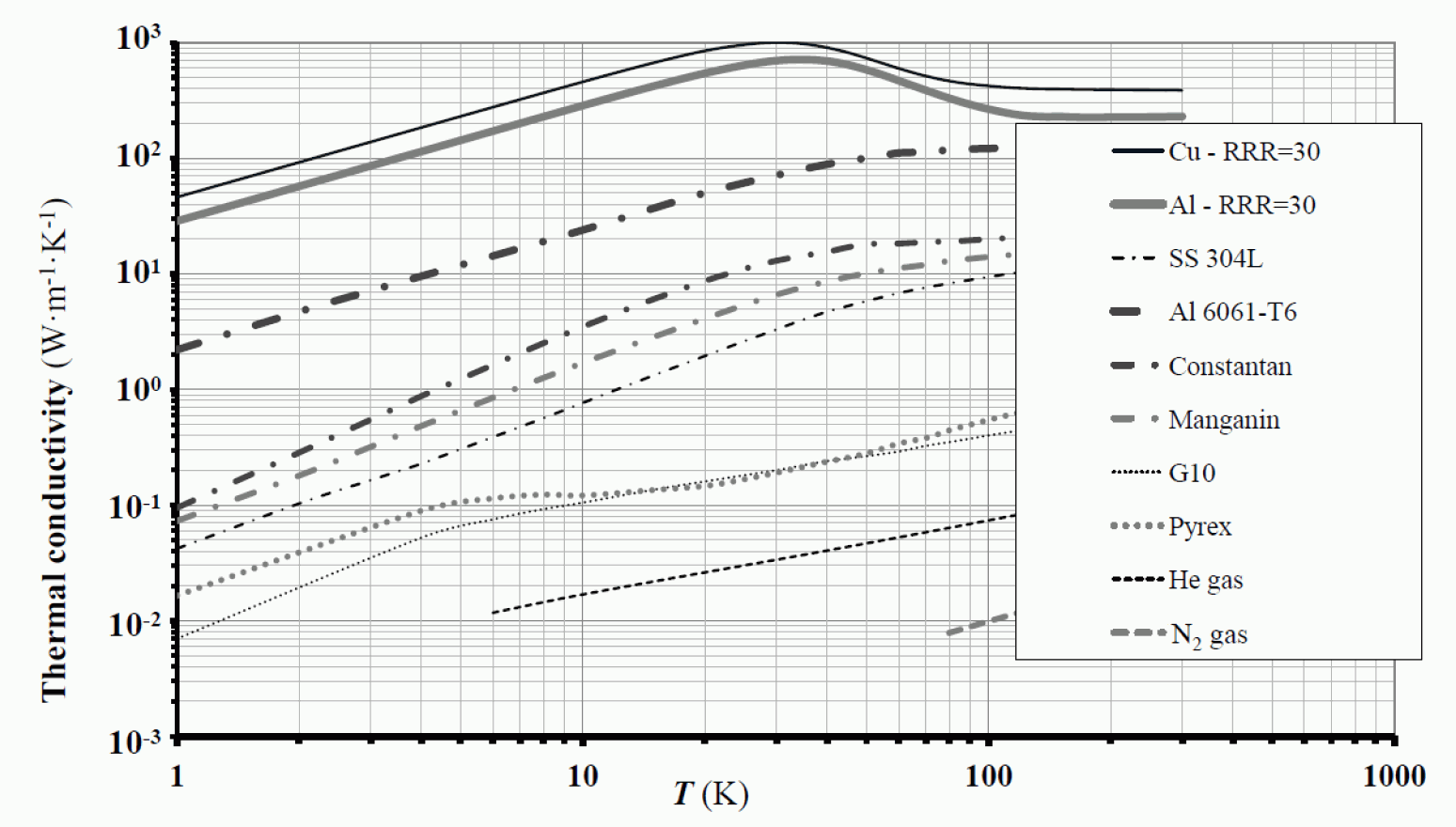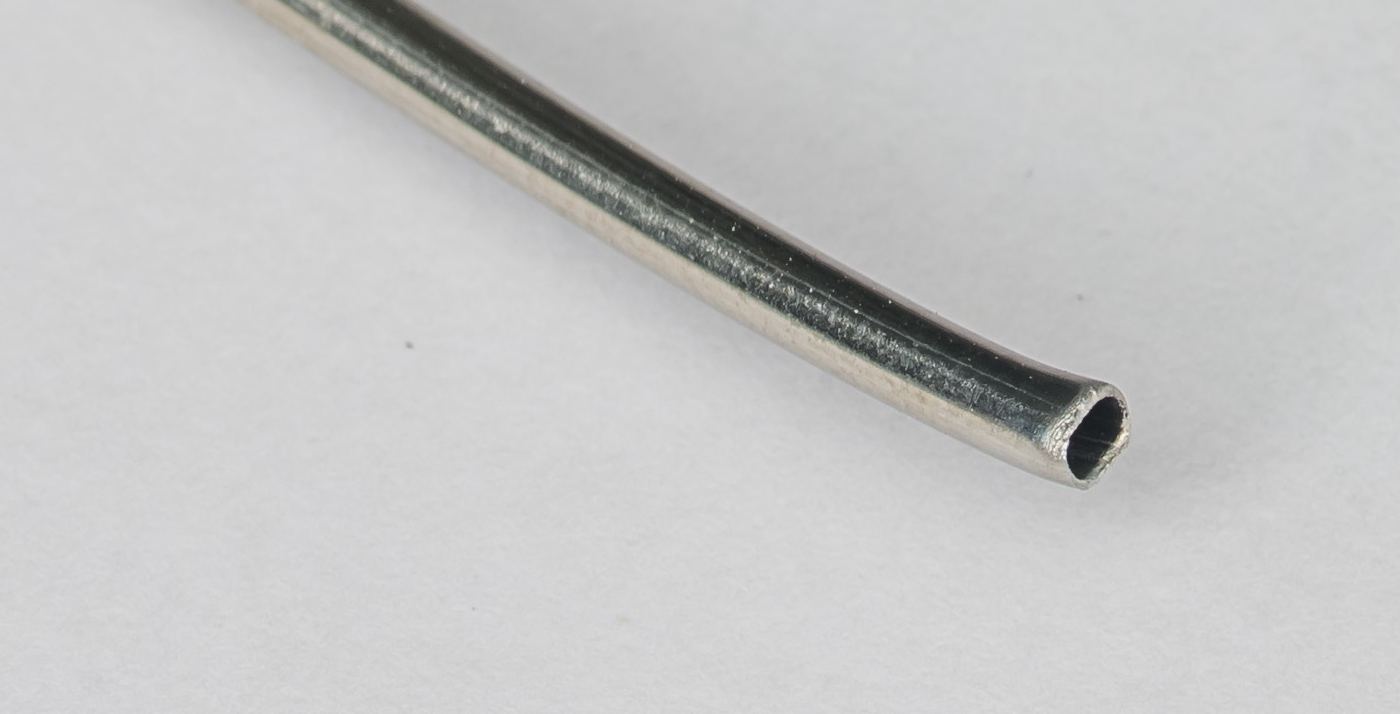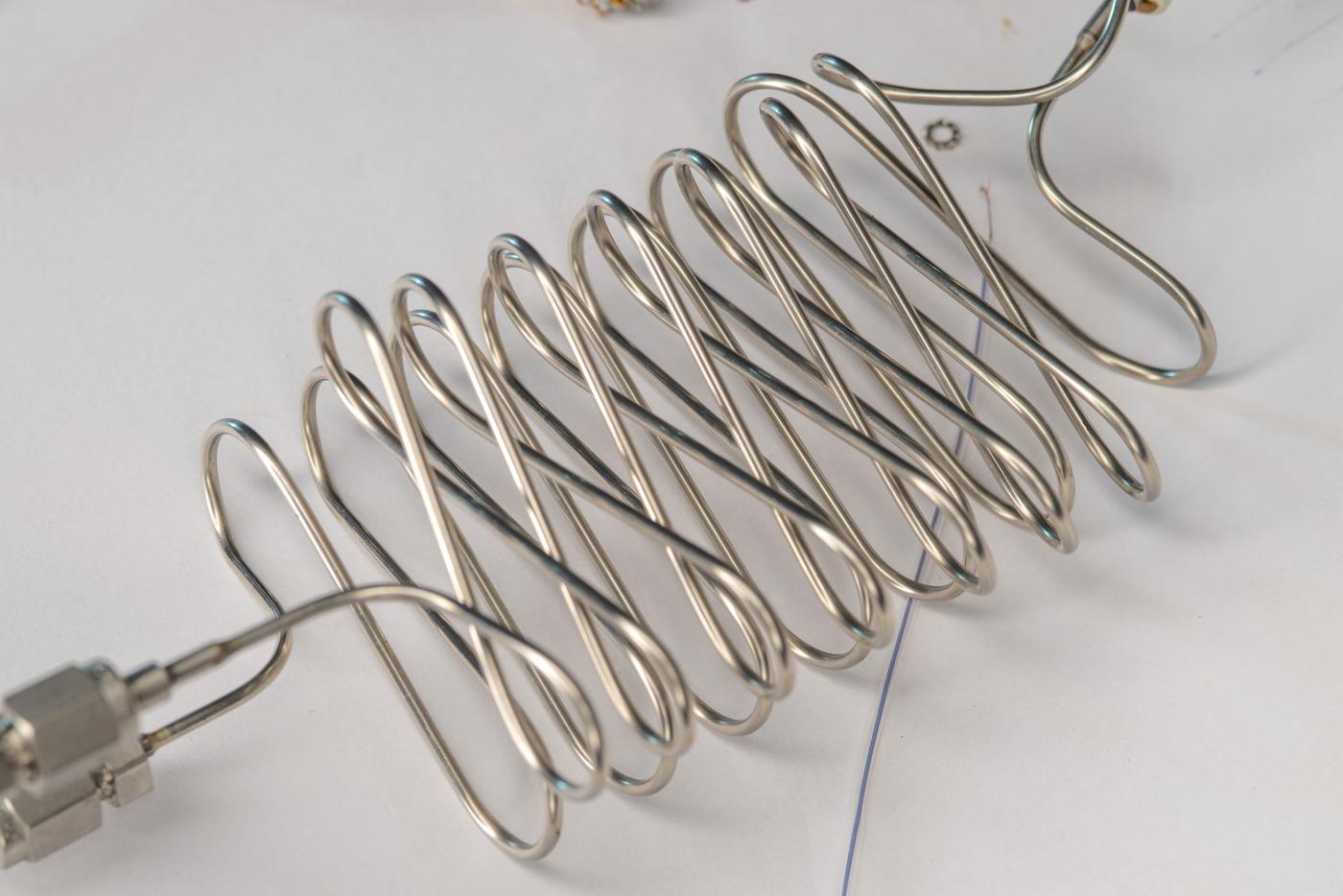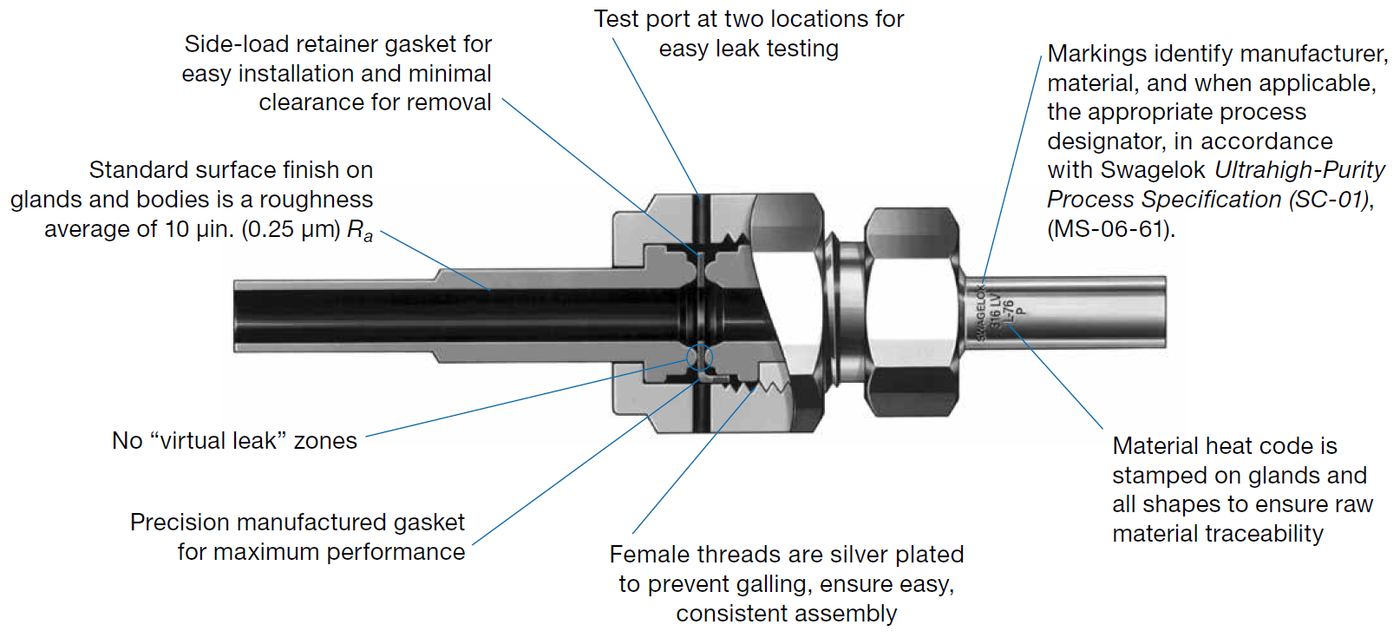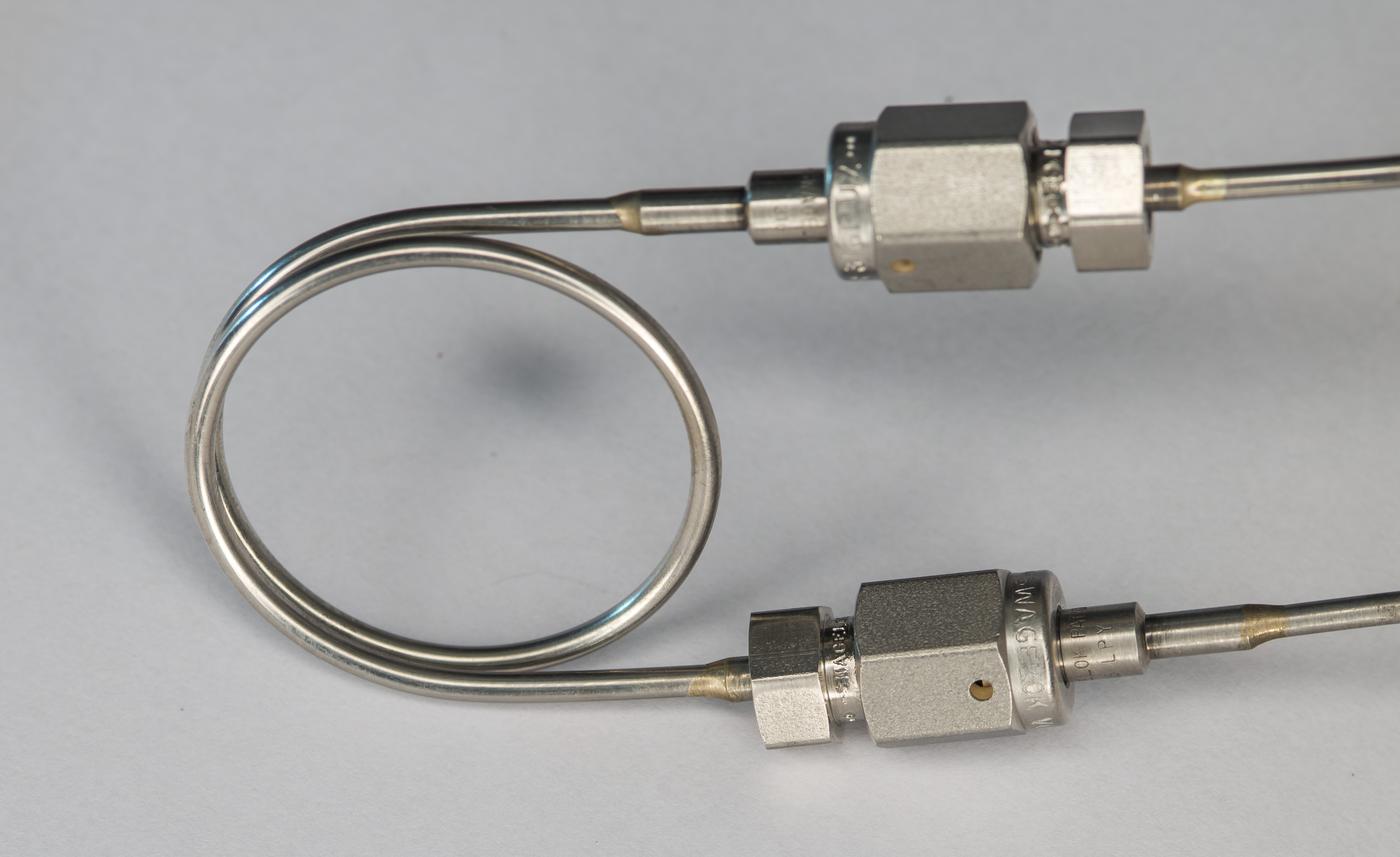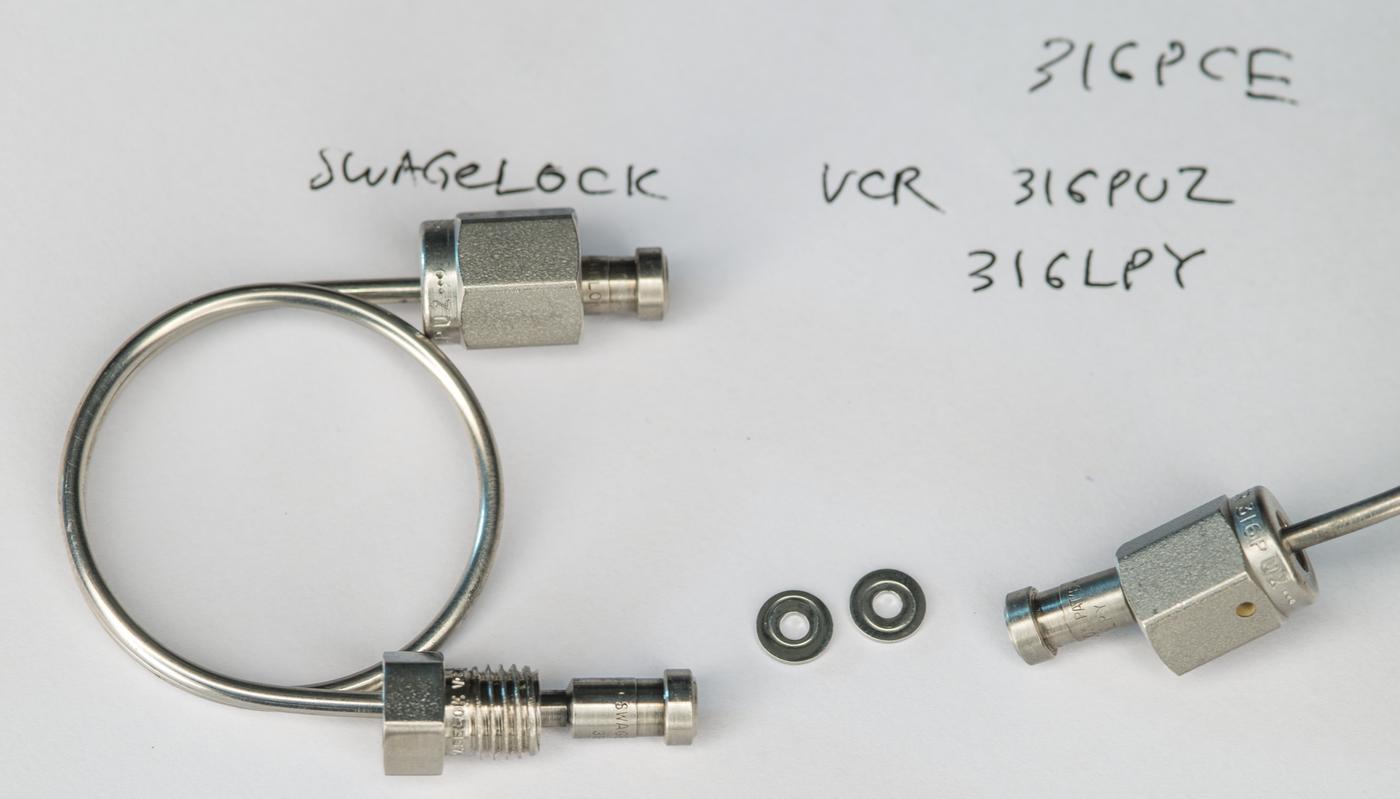The Scientific Instruments manufacture and sell products for cryogenic temperature sensing. Company was involved in development of the Germanium Resistance thermometers that were installed into Helium and Hydrogen systems on the Apollo space craft and at the end of the 1960’s flew on Lunar landing missions.
But in this post we’ll look at Model Si-540 Silicon Diode Temperature Sensors. These specialized devices operate over a wide temperature range (1.5K to 450K) and are miniature in size. They are linear over a wide temperature range interval, have high sensitivity in their lower range, and are interchangeable to a standard V/T curve provided by Scientific Instruments.
Here are few photos of Model 22 Bobbin type Si-540 with four-wire phosphor-bronze 36AWG wiring.
Tiny color coded coated wires are bundled together into a cable with teflon tubing for protection. Such cable has very low thermal conductivity over the length, reducing a load to the cryocooler at the DUT assembly. Top and bottom surfaces of the sensor are polished copper with gold plating to ensure excellent thermal contact with a test device.
Hole is provided for robust mechanical mounting of the sensor to various surfaces. Each of these sensors has listed MSRP in range from $270 USD to $846 USD depending on accuracy specification group. This pricing is comparable to other diode sensors on the market, such as LakeShore DT-670 which come in similar CU package option as well.
This photo below has a lot to unpack. Si-540 sensors were salvaged from used He4 gas cooling system where they were mounted on a cold stages of gas heatexchangers. To have good thermal contact of flat sensor surface to the copper tube additional flat copper block was brazed in place with threaded hole to provide good surface and thermal contact.
At the same time this tube had to be secured in the system mechanically without introducing much of the thermal conduction losses. So special fiberglass G10 insert bobbin was secured in place at the left section of the tube. Since other far end went to the room temperature flange of the vacuum vessel rest of the gas piping was done using 316 stainless steel, brazed to copper cryogenics section.Stainless steel thermal conductivity at low temperatures is around 3 magnitudes less to one of aluminum and copper. Together with low cost these property makes stainless steel a good material choice for robust cold gas transport in dry cryogenic systems and equipment.
To further reduce conductivity walls and tubes are usually made thin and long, to further reduce thermal loss effects.
Here are almost two meter of coiled steel tubings were arranged in a pretty zig-zag assembly.
Gas transportation in low temperature environment and scientific instrumentation frequently necessitates vacuum-tight, durable metal-to-metal connections to facilitate servicing and effortless assembly. A commonly used system for such interconnections is the Swagelok VCR. The Swagelok VCR (VCR® Metal Gasket Face Seal) system is a type of high-purity fitting commonly used in vacuum and high-pressure applications. It provides a reliable and leak-tight connection between metal tubing, ensuring a secure seal even in challenging environments.
These interfaces are carefully engineered to the most critical applications and are well known to people working with high vacuum equipment. VCR comes with different shapes and sizes with plenty of customization options to fit every need.
Machining of these connectors is really nice and they are a pleasure to work with. Metal-to-metal connection ensures that there are no elastomers or other soft materials in the fluid or gas path, making it suitable for high-purity and vacuum applications.
As expected, price of these interconnects is not cheap, compared to some generic interfaces.
Stay tuned and let us know your feedback on this post! Discussion about this and related stuff is also welcome in comment section or at our own IRC chat server: xdevs.com (port six-zero-ten-zero, channel: #xDevs.com) or via e-mail.
Modified: Oct. 3, 2023, 3:38 a.m.

